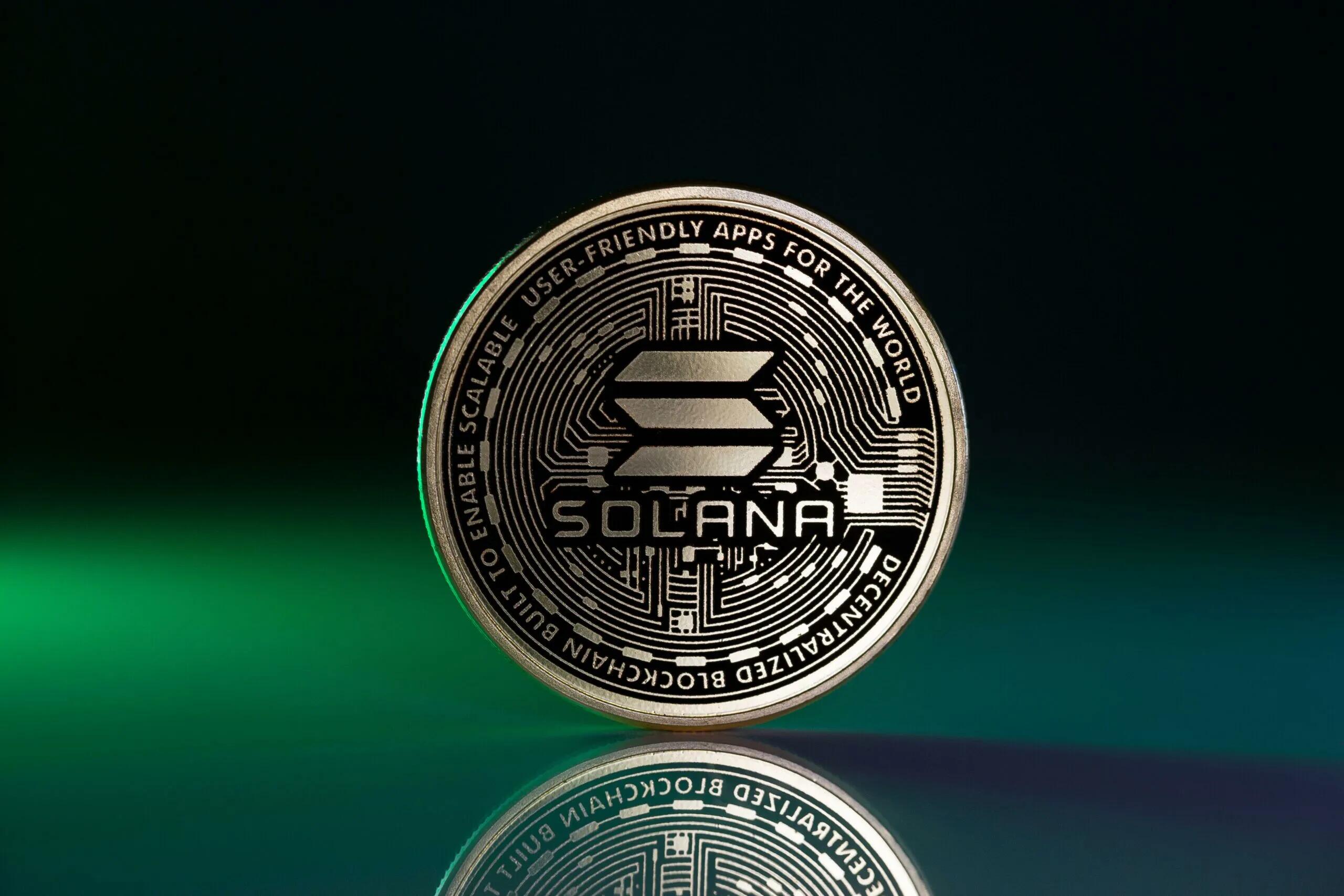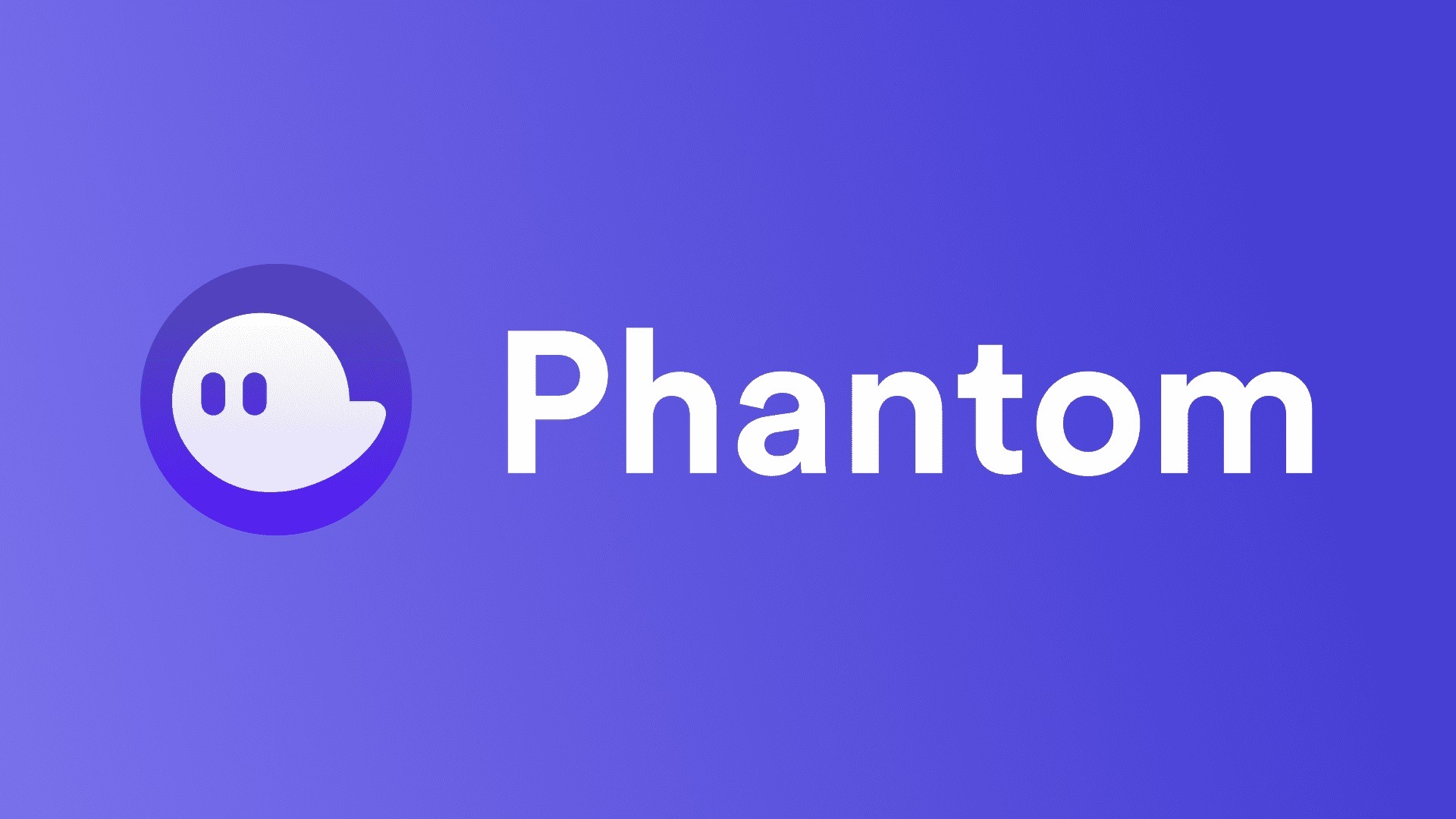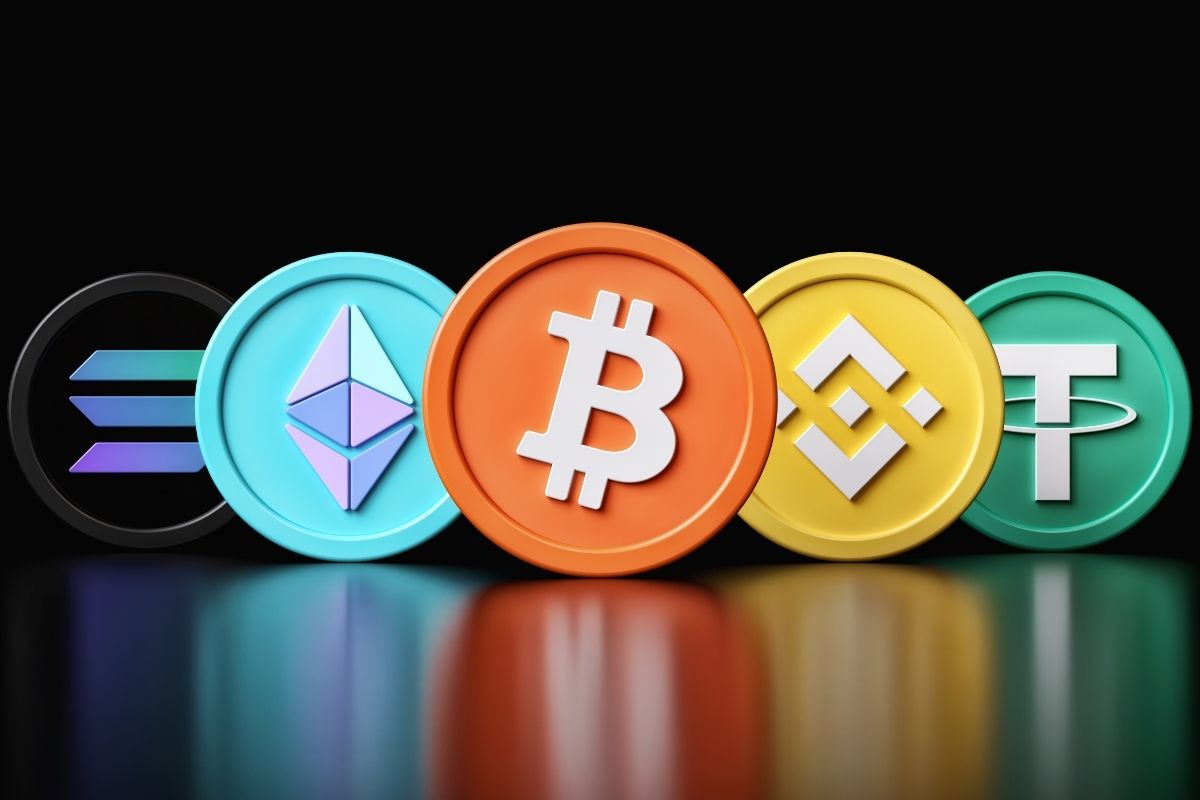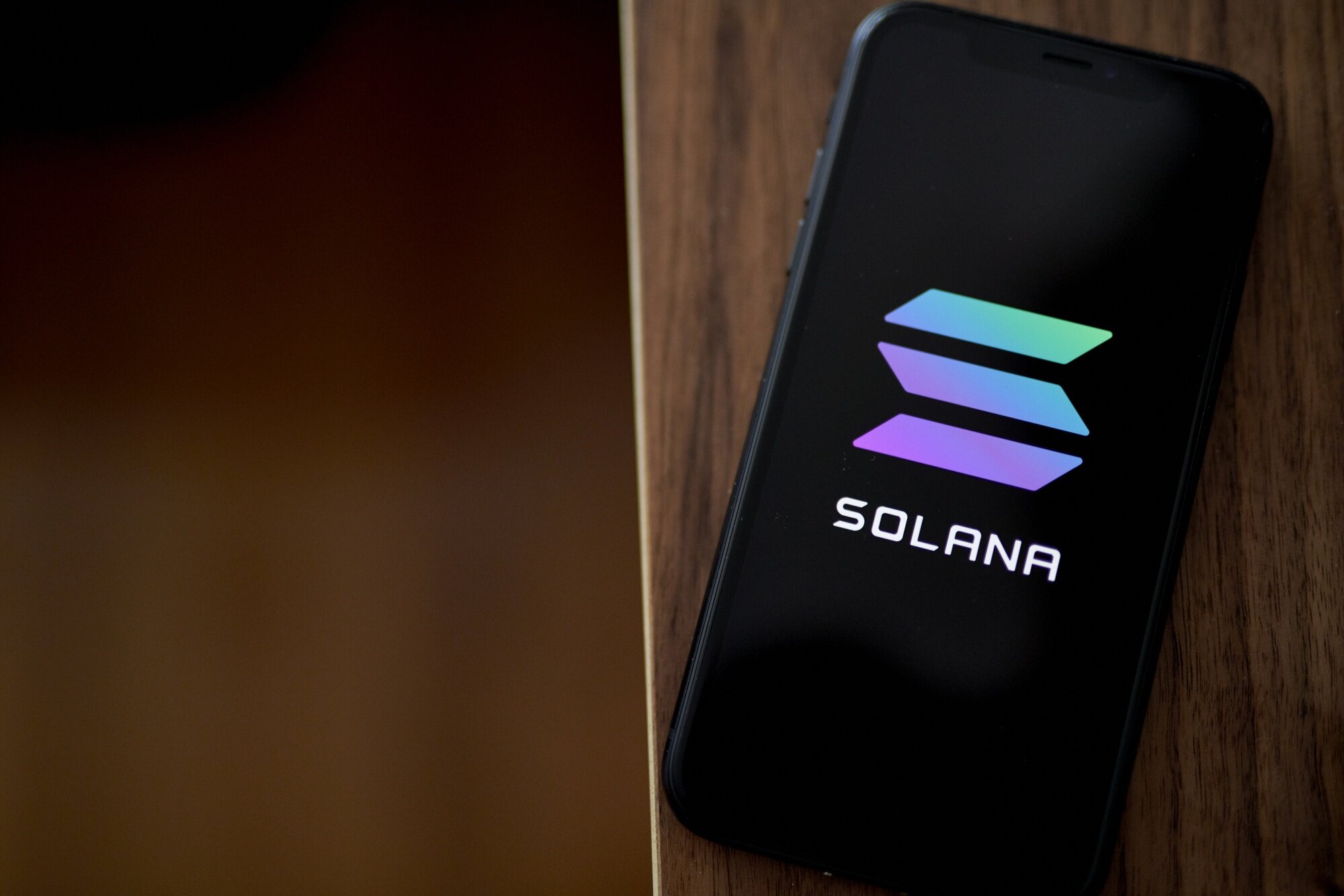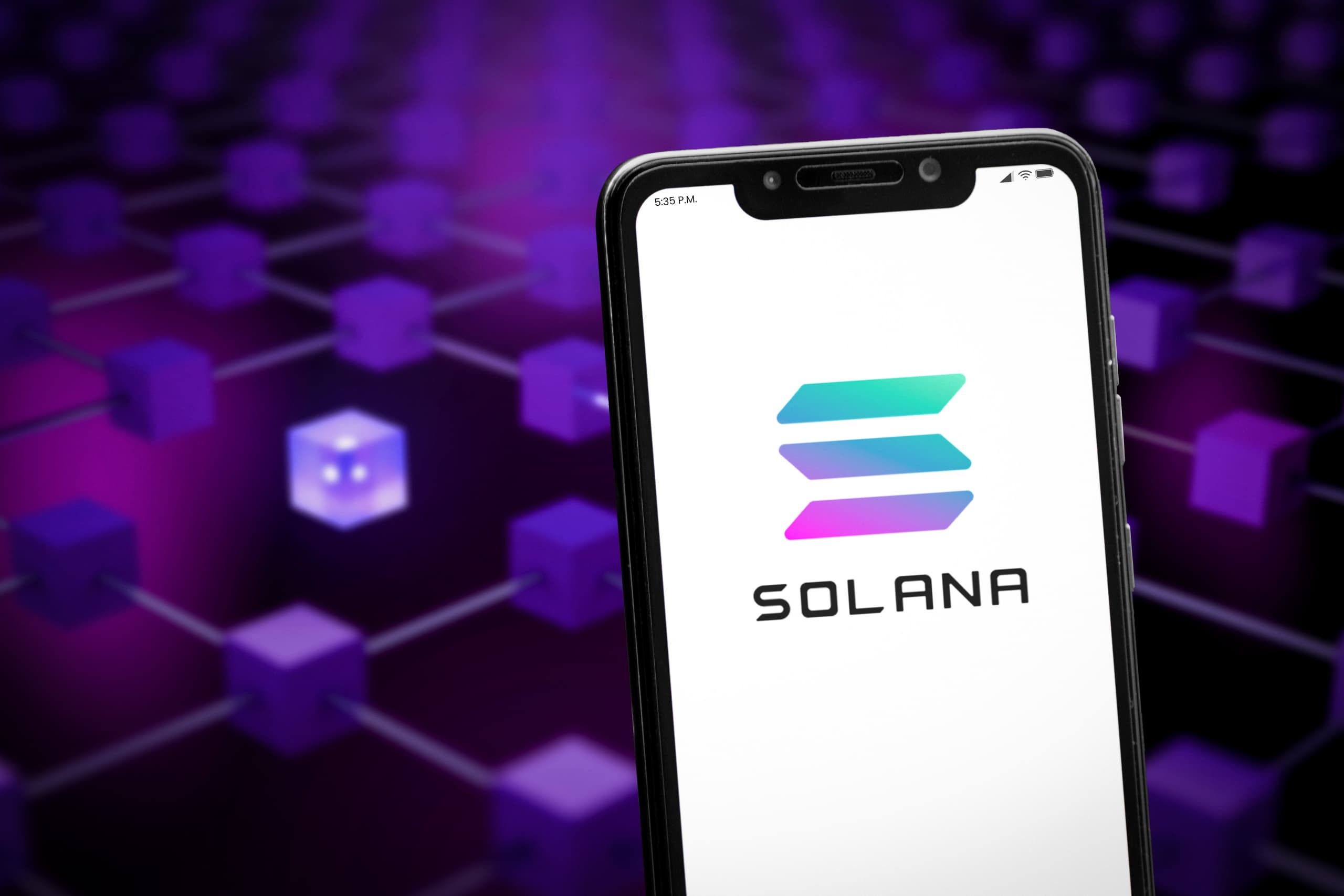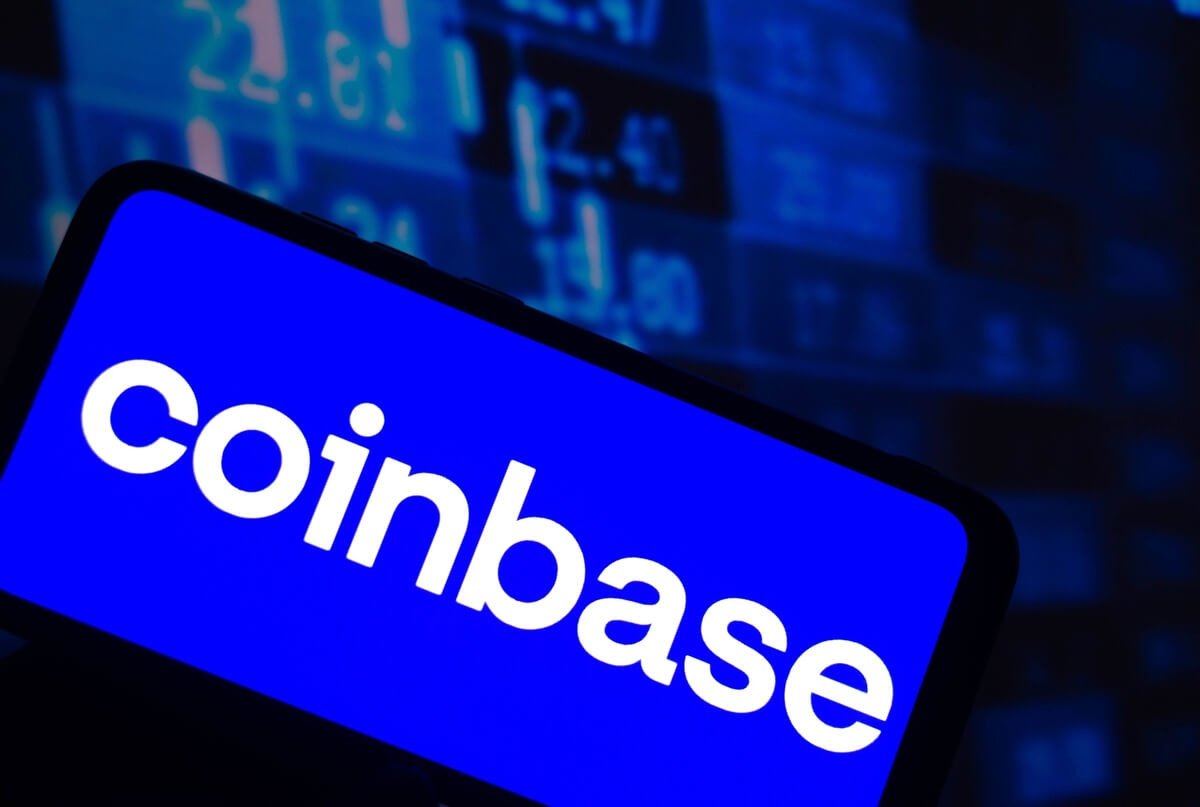Introduction
Solana is an innovative blockchain platform that aims to address the scalability and performance limitations of traditional blockchain networks. Launched in March 2020, Solana offers a unique combination of cutting-edge technologies and features that enable fast, secure, and low-cost transactions. With its high throughput capabilities and advanced consensus mechanism, Solana has garnered significant attention in the crypto industry.
As the popularity of blockchain technology has grown, so has the need for scalable solutions that can handle a large volume of transactions in a timely manner. Traditional blockchain networks, such as Bitcoin and Ethereum, have faced challenges in terms of scalability, causing congestion and high transaction fees. Solana aims to overcome these limitations by employing a unique combination of consensus and transaction processing mechanisms.
By leveraging its innovative consensus algorithm called Proof of History (PoH) and combining it with the more widely known Proof of Stake (PoS) mechanism, Solana achieves high scalability and fast transaction processing. Its architecture allows for parallel processing of transactions, resulting in significantly improved throughput compared to other blockchain networks.
Solana’s key features include its high throughput capabilities, fast transaction speeds, and low-cost transactions. It has gained attention from both developers and enterprises due to its potential applications in various sectors, including decentralized finance (DeFi), gaming, and non-fungible tokens (NFTs).
In this article, we will explore the key aspects of Solana, including how it works, its consensus mechanism, its transaction processing capabilities, its unique features, and its native cryptocurrency, SOL. By the end of this article, you will have a better understanding of Solana and its potential impact on the blockchain industry.
What is Solana?
Solana is a high-performance blockchain platform designed to accommodate decentralized applications (dApps) and provide developers with a scalable and secure infrastructure. It was created by Solana Labs and has gained significant attention for its ability to handle a large number of transactions with unparalleled speed and low fees.
At its core, Solana is a Layer 1 blockchain protocol that allows for the creation of smart contracts and decentralized applications. It is built on a unique combination of technologies and features, making it one of the most promising blockchains in the industry.
One of the key characteristics of Solana is its scalability. Traditional blockchain networks face challenges in handling a large number of transactions, leading to congestion and slower processing speeds. Solana addresses this issue by utilizing a highly efficient consensus mechanism called Proof of History (PoH), combined with the widely adopted Proof of Stake (PoS) consensus mechanism.
The Proof of History (PoH) mechanism helps Solana achieve a crucial aspect of scalability: timekeeping. By generating a verifiable sequence of events, PoH establishes a historical proof of the order in which transactions occurred. This allows Solana’s validators to agree on the sequence of events without the need for costly synchronization.
In addition to its innovative consensus mechanism, Solana’s transaction processing is also optimized for speed and efficiency. Through the use of a unique architecture called Tower BFT (Byzantine Fault Tolerance), Solana can process transactions in parallel, significantly increasing the network’s throughput. This means that Solana can handle a greater number of transactions per second compared to other blockchain networks, offering developers and users a seamless experience.
Furthermore, Solana is designed to be developer-friendly, offering a robust set of development tools, libraries, and frameworks. This allows developers to easily build and deploy their decentralized applications on the Solana network, benefitting from its scalability, security, and high-performance capabilities.
Overall, Solana stands out in the blockchain space due to its focus on scalability, fast transaction processing, and developer-friendly ecosystem. By leveraging innovative technologies and combining them with proven consensus mechanisms, Solana offers a promising solution for the challenges faced by traditional blockchain networks. Its ability to handle a high volume of transactions at low costs positions it as a key player in the future of decentralized applications and the broader blockchain industry.
How does Solana work?
Solana operates on a unique combination of technologies and features that contribute to its high-performance capabilities. Understanding how Solana works involves delving into its consensus mechanism, transaction processing, and network architecture.
At the heart of Solana’s functioning is its consensus mechanism, which ensures agreement among network participants regarding the state of the blockchain. Solana employs two primary consensus mechanisms: Proof of History (PoH) and Proof of Stake (PoS).
The Proof of History (PoH) mechanism is responsible for establishing the order of transactions within the network. It acts as a verifiable time source, creating a historical record of events that cannot be altered. By relying on historical proofs, the PoH mechanism eliminates the need for nodes to synchronize and agree on the order of transactions, significantly improving the network’s scalability.
Alongside PoH, Solana utilizes Proof of Stake (PoS) as its main consensus mechanism. PoS relies on validators who hold a stake in the network and are responsible for validating and confirming transactions. Validators are selected through a process called “leader election,” where nodes with larger stakes have a higher probability of being chosen. This consensus mechanism helps maintain the security and integrity of the Solana network.
When it comes to transaction processing, Solana’s architecture is designed to ensure high throughput. It leverages a technology called Tower BFT (Byzantine Fault Tolerance), which allows for parallel transaction processing. In Tower BFT, multiple transactions are grouped together in a “slot,” and these slots are processed simultaneously by different nodes in the network. This parallel processing enables Solana to handle a large number of transactions concurrently, resulting in faster transaction speeds and increased scalability.
Another key component of Solana’s architecture is its use of a gossip protocol called Gulf Stream. This protocol facilitates the propagation of transactions and consensus-related information across the network, ensuring that all validators have consistent information about the state of the blockchain. The combination of parallel transaction processing and efficient information sharing enhances the network’s overall performance.
It’s worth noting that Solana’s network architecture is designed to be highly decentralized and fault-tolerant. The network consists of a large number of independently operated nodes, each contributing to the security and stability of the blockchain. This decentralized structure adds an additional layer of security and makes Solana resistant to single points of failure.
Overall, Solana’s unique combination of consensus mechanisms, parallel transaction processing, and decentralized network architecture enables it to deliver exceptional scalability, speed, and security. By addressing the limitations of traditional blockchain networks, Solana paves the way for the development and adoption of high-performance decentralized applications.
Consensus mechanism: Proof of History (PoH)
One of the key innovations of Solana is its unique consensus mechanism known as Proof of History (PoH). PoH serves as a reliable and verifiable time source for the Solana blockchain, allowing for the accurate ordering of transactions and events without the need for all network participants to synchronize.
The concept behind PoH is to create a historical record of events that cannot be tampered with or modified. It achieves this by generating a series of verifiable timestamps that establish a clear order of when specific events occurred.
In practice, Solana nodes incorporate PoH as a part of their consensus mechanism. Each node continuously maintains its own local clock and records timestamps as new events occur. These events can include not only transactions but also the validation of previous transactions and other network-related activities.
The generation of timestamps in Solana’s PoH occurs through the use of a cryptographic hashing algorithm combined with an input stream of system events. This input stream is derived from the network’s own verifiable time source, which is based on the network’s initial state and inputs from trusted timestamping authorities.
By incorporating the PoH timestamps into the block structure, Solana nodes can verify the order of events and transactions without the need for explicit synchronization. This unique feature significantly improves the network’s scalability and performance, as it eliminates the time-consuming process of synchronizing every node’s clock with others within the network.
Furthermore, PoH also adds an additional layer of security to the Solana network. Since each event and transaction is tied to a specific timestamp, any attempt to alter the order of events would require recalculating the timestamps, which is computationally expensive and likely to be detected by honest nodes as an inconsistency.
Although PoH is a critical component of Solana’s consensus mechanism, it is important to note that it works in conjunction with other mechanisms, such as Proof of Stake (PoS). PoS is responsible for selecting validators who validate and confirm the transactions and events recorded by PoH. The combination of PoH and PoS ensures the overall security and integrity of the Solana blockchain.
In summary, Solana’s Proof of History is a groundbreaking innovation that provides a verifiable time source for the network, allowing for the accurate ordering of events and transactions. By eliminating the need for synchronization and introducing a tamper-proof historical record, Solana achieves impressive scalability, performance, and security, setting itself apart from traditional blockchain networks.
Transaction processing: Proof of Stake (PoS)
In addition to the innovative Proof of History (PoH) consensus mechanism, Solana utilizes another key component called Proof of Stake (PoS) for transaction processing. PoS is a widely adopted consensus mechanism that enables Solana to achieve fast and secure transaction validation.
Under the PoS mechanism, validators are chosen to validate and confirm transactions based on the amount of cryptocurrency they hold and are willing to “stake” as collateral. In Solana, the native cryptocurrency SOL serves as the staking asset.
The selection of validators in Solana follows a process known as “leader election.” The probability of being selected as a validator is proportional to the amount of SOL tokens staked by the candidate. This means that validators with a higher stake have a greater chance of being chosen to participate in the consensus process.
Once selected, validators are responsible for verifying the validity of transactions and adding them to the blockchain. This verification process includes checking the digital signatures and ensuring that the transaction meets the necessary criteria, such as available funds and adherence to network rules.
In Solana, the consensus process occurs through a series of rounds called “slots.” During each slot, a new set of transactions is grouped together, and validators race to create a cryptographic proof called a “block.” The first validator to produce a valid block for a particular transaction slot is rewarded with transaction fees and newly minted SOL tokens.
To ensure the security and integrity of the network, Solana utilizes the Tower Byzantine Fault Tolerance (BFT) protocol. This protocol enables the network to tolerate up to one-third of the validators being compromised or acting maliciously without affecting the overall integrity of the consensus process.
One notable feature of Solana’s PoS mechanism is its ability to process transactions in parallel. Unlike traditional blockchain networks, which process transactions one after the other, Solana’s architecture allows for multiple transactions to be processed simultaneously. This parallel processing results in significantly higher transaction throughput and faster confirmation times, enhancing the overall efficiency of the network.
The use of PoS in Solana not only guarantees fast and secure transaction processing but also incentivizes network participants to maintain the stability and security of the blockchain. Validators who act honestly and contribute to the consensus process are rewarded with transaction fees and SOL token rewards, further encouraging their participation.
In summary, Solana’s transaction processing leverages the widely adopted Proof of Stake (PoS) mechanism. Through PoS, validators are selected based on their stake in the network, and they play a crucial role in validating and confirming transactions. The parallel processing capability of Solana’s architecture ensures high transaction throughput and fast confirmation times, making it an ideal platform for a wide range of decentralized applications.
Solana’s key features
Solana, as a high-performance blockchain platform, offers several key features that distinguish it from traditional blockchain networks. These features contribute to its scalability, speed, and developer-friendly ecosystem, making it an attractive choice for decentralized application development. Let’s explore some of Solana’s key features:
1. Scalability and high throughput: Solana is designed to scale horizontally, meaning it can handle a large number of transactions simultaneously. By utilizing parallel processing and an efficient consensus mechanism, Solana achieves high throughput and can support thousands of transactions per second. This scalability makes it suitable for various use cases, including decentralized finance, gaming, and non-fungible tokens.
2. Fast and low-cost transactions: Solana’s architecture enables fast transaction processing with low fees. The combination of a unique consensus mechanism, PoH, and PoS allows for quick confirmation of transactions, leading to improved user experiences. Additionally, low transaction costs make Solana an appealing option for developers and users seeking affordable blockchain solutions.
3. Developer-friendly ecosystem: Solana provides a robust set of developer tools and resources to facilitate the building and deployment of decentralized applications. It supports popular programming languages like Rust, C, and C++, and offers toolkits, libraries, and frameworks that streamline the development process. The platform’s emphasis on developer experience encourages innovation and adoption within the Solana ecosystem.
4. High security and decentralization: Solana’s decentralized network architecture ensures the security and stability of the blockchain. The combination of PoH and PoS consensus mechanisms enhances the overall security of the network, while the large number of independent nodes contributes to decentralization. This enhances resistance to attacks and ensures the trustworthiness of the Solana blockchain.
5. Interoperability and cross-chain functionality: Solana strives to enable interoperability with other blockchain networks, allowing for seamless communication and asset transfers between different protocols. By supporting cross-chain functionality, Solana unlocks the potential for collaboration and the integration of various decentralized applications and ecosystems.
6. Ecosystem and partnerships: Solana has gained significant traction within the blockchain industry, attracting a thriving ecosystem of developers, entrepreneurs, and projects. It has formed strategic partnerships with industry leaders and established collaborations with popular platforms, fostering innovation and expanding the potential applications of Solana for various industries.
In summary, Solana’s key features, including scalability, fast and low-cost transactions, developer-friendly tools, security, interoperability, and a thriving ecosystem, make it a compelling choice for building decentralized applications. As Solana continues to evolve and grow, it has the potential to transform the blockchain landscape and drive the adoption of high-performance blockchain solutions.
Scalability and high throughput
One of the standout features of Solana is its ability to address the scalability challenges faced by traditional blockchain networks. Solana’s architecture and unique combination of technologies enable it to achieve high throughput and handle a large number of transactions simultaneously.
In traditional blockchain networks, the processing of transactions can be slow and limited due to the sequential nature of block validation. This can result in network congestion and increased transaction fees. Solana, on the other hand, utilizes a combination of parallel processing and an innovative consensus mechanism to achieve remarkable scalability.
Through parallel processing, Solana can execute multiple transactions simultaneously. This is achieved by dividing the transaction processing workload into smaller tasks called “pipelined parallel processing.” Each task is assigned to a different node within the network, and these nodes work in parallel to process the transactions efficiently.
The use of parallel processing allows Solana to achieve high throughput, meaning it can handle a significant number of transactions per second. Currently, Solana has achieved transaction throughput that rivals centralized payment processors, with the potential to scale even higher in the future.
Another crucial element contributing to Solana’s scalability is its innovative consensus mechanism, Proof of History (PoH). PoH provides a verifiable and immutable record of the order in which transactions occur. By leveraging PoH, Solana’s validators can agree on the sequence of events without the need for time-consuming synchronization. This eliminates a significant bottleneck for scalability that traditional blockchain networks face.
In addition to PoH, Solana also employs Proof of Stake (PoS) as its consensus mechanism. PoS ensures the security and integrity of the network by selecting validators based on the amount of cryptocurrency they hold and are willing to stake as collateral. This incentivizes participants to act honestly and maintain the stability of the blockchain network.
With its scalable architecture and efficient consensus mechanisms, Solana opens up possibilities for a wide range of applications. It is particularly well-suited for decentralized finance (DeFi), where high throughput and low transaction costs are crucial for the success of complex financial operations.
Furthermore, Solana’s high throughput and scalability are not limited to transaction processing. The platform also enables rapid smart contract execution, making it ideal for developers building decentralized applications requiring fast and responsive smart contract interactions.
Overall, Solana’s scalability and high throughput capabilities set it apart in the blockchain industry. Through its innovative approach to parallel processing and the utilization of PoH and PoS, Solana provides a platform that can handle a large number of transactions at exceptional speeds, making it well-positioned for the future of decentralized applications and blockchain adoption.
Fast and low-cost transactions
One of the key advantages of Solana is its ability to facilitate fast and low-cost transactions. Solana’s architecture and innovative mechanisms enable it to provide users with a seamless, efficient, and cost-effective experience when conducting transactions on the platform.
Traditional blockchain networks often face challenges in terms of transaction speed and cost due to the limitations of their consensus mechanisms. However, Solana’s unique combination of technologies allows it to overcome these limitations and provide users with fast and inexpensive transactions.
The efficient transaction processing of Solana is primarily attributed to its parallel processing capabilities. By splitting transaction processing into smaller tasks and allowing multiple nodes to process transactions simultaneously, Solana achieves high throughput. This means that a greater number of transactions can be processed within a given timeframe when compared to traditional blockchains.
In addition to parallel processing, Solana’s consensus mechanism, Proof of Stake (PoS), also contributes to its fast transaction speeds. The PoS mechanism eliminates the need for miners to compete to solve complex cryptographic puzzles, resulting in quicker block confirmation times. With faster block confirmations, transactions can be confirmed and added to the blockchain with minimal delay, leading to faster overall transaction processing.
Furthermore, Solana excels in providing low-cost transactions, reducing the financial burden for users. The elimination of energy-intensive mining activities within the Solana network significantly reduces transaction costs compared to traditional proof-of-work blockchains. The fees required to execute transactions on Solana remain affordable, making it an attractive option for both individuals and enterprises.
The combination of fast transaction speeds and low costs makes Solana well-suited for various applications and use cases. In decentralized finance (DeFi), where speed and cost-effectiveness are critical, Solana’s capabilities enable the seamless execution of complex financial operations. Additionally, Solana’s affordable transaction fees make it an attractive platform for developers and users looking to build and utilize decentralized applications within a cost-efficient environment.
Moreover, Solana’s commitment to user experience extends beyond fast and low-cost transactions. The platform aims to provide a frictionless environment where users can easily and confidently conduct transactions without delays or excessive fees. This user-centric approach further enhances the appeal of Solana as a blockchain platform.
In summary, Solana offers fast and low-cost transactions thanks to its parallel processing capabilities, the efficiency of its consensus mechanism, and its commitment to user experience. By providing users with rapid transaction confirmations and affordable fees, Solana enables a seamless and cost-effective experience within the blockchain ecosystem.
Ecosystem and partnerships
Solana has built a robust ecosystem of developers, projects, and partnerships that support and contribute to the growth and adoption of the platform. The strong and expanding ecosystem of Solana is a testament to its promising potential and the confidence it has garnered within the blockchain industry.
The Solana ecosystem is home to a vibrant community of developers who are actively building decentralized applications (dApps) on the platform. Solana provides a comprehensive set of developer tools, libraries, and frameworks that streamline the development process, making it easier for developers to create innovative and scalable applications. The platform supports popular programming languages like Rust, C, and C++, which further encourages the adoption and involvement of developers from various backgrounds and skill sets.
In addition to its developer-centric approach, Solana has formed strategic partnerships with prominent blockchain projects, industry leaders, and organizations. These partnerships help facilitate the adoption and integration of Solana’s technology into various sectors, creating new opportunities for collaboration and interoperability.
One notable partnership is with Serum, an innovative decentralized exchange (DEX) built on Solana. Serum provides a decentralized trading platform and leverages Solana’s high-performance capabilities to offer traders a seamless and efficient trading experience. This collaboration has brought further attention to Solana’s ecosystem and showcases its potential for decentralized finance (DeFi) applications.
Moreover, Solana has gained recognition for its integration with Chainlink, a decentralized oracle network. This collaboration enables secure and reliable data sourcing for Solana-based smart contracts, bolstering the platform’s suitability for data-driven applications.
Solana has also attracted the attention of venture capital firms and investors who recognize the platform’s potential. Notable investors include Multicoin Capital, Polychain Capital, and CMS Holdings, among others. Their support and investment in Solana further validate its vision and technological advancements.
The partnerships and collaborations within the Solana ecosystem extend beyond specific projects and organizations. Solana actively engages with decentralized finance (DeFi) protocols, Non-Fungible Token (NFT) marketplaces, and gaming platforms to explore innovative use cases and promote the adoption of its technology.
Through its strong ecosystem and partnerships, Solana has created a thriving environment for developers, businesses, and users. The collaborations foster innovation, encourage adoption, and showcase the platform’s scalability and capabilities across various industries and use cases.
As the Solana ecosystem continues to grow, the platform’s partnerships and collaborations will play a vital role in expanding its reach, attracting new developers and users, and driving adoption of Solana’s high-performance blockchain technology.
Solana’s native cryptocurrency: SOL
SOL is the native cryptocurrency of the Solana blockchain platform. As the backbone of the Solana ecosystem, SOL plays a vital role in facilitating transactions, incentivizing validators, and promoting network participation.
SOL serves as both a utility token and a governance token within the Solana network. It is used to pay for transaction fees, interact with smart contracts, participate in staking and voting, and access various decentralized applications (dApps) and services built on Solana.
One of the key functions of SOL is to incentivize validators who maintain the integrity and security of the Solana network. Validators who stake their SOL tokens as collateral and participate in the consensus process not only earn transaction fees but also receive additional rewards in the form of newly minted SOL tokens.
The availability of SOL tokens for staking motivates validators to act in the best interest of the network, increasing security and decentralization. This serves to protect the blockchain from malicious attacks and ensures the stability of the platform.
Furthermore, SOL tokens are essential for network governance on Solana. Holders of SOL have the opportunity to participate in important decision-making processes that shape the future of the platform. This can include voting on protocol upgrades, proposing changes, or participating in governance discussions that influence the direction of Solana’s development.
SOL tokens also have utility within the Solana ecosystem. Developers building decentralized applications (dApps) on Solana can use SOL tokens as a native currency within their applications. This enables seamless and efficient transactions within the dApps, enhancing the overall user experience and interaction with the Solana network.
Moreover, SOL’s growing adoption and utility have resulted in its listing on multiple cryptocurrency exchanges. This availability and liquidity make SOL accessible to a wider audience, facilitating its use and integration in the broader crypto ecosystem.
As Solana continues to gain traction and its ecosystem expands, the demand for SOL tokens is likely to increase. This demand can be driven by multiple factors, including the growth of decentralized applications, the participation of validators, and the overall adoption of Solana’s technology.
In summary, SOL is the native cryptocurrency of Solana, fueling the platform’s transactions, incentivizing validators, and enabling governance within the network. With its multiple use cases, including staking, voting, transaction fees, and participation in dApps, SOL plays a critical role in the Solana ecosystem. As Solana’s adoption and utility continue to grow, SOL is poised to become an increasingly important asset within the crypto community.
Conclusion
Solana stands out as a high-performance blockchain platform that addresses the scalability and speed limitations faced by traditional blockchain networks. Through its innovative combination of technologies and unique consensus mechanisms, Solana offers fast and low-cost transactions, high throughput, and a developer-friendly ecosystem.
With its innovative consensus mechanism, Proof of History (PoH), Solana provides a verifiable time source that eliminates the need for synchronization among network participants. This ensures accurate ordering of transactions and enhances scalability. Additionally, Solana’s parallel transaction processing and efficient consensus mechanism, Proof of Stake (PoS), allow for rapid transaction confirmations and support a large volume of transactions without compromising security.
Scalability and high throughput are among Solana’s key features. The platform’s ability to handle a high number of transactions simultaneously sets it apart from traditional blockchains, making it well-suited for applications requiring quick and efficient transaction processing. Additionally, Solana offers fast and low-cost transactions, enabling cost-effective transactions for users and boosting its suitability for a wide range of use cases, including decentralized finance (DeFi) and gaming.
The Solana ecosystem, supported by strategic partnerships and a thriving developer community, further contributes to its growth and adoption. The collaborations with projects like Serum and Chainlink demonstrate the potential for Solana’s technology to be integrated into diverse industries and applications. In addition, the availability and utility of the native cryptocurrency SOL facilitates network participation, incentivizes validators, and enables governance within the Solana network.
In conclusion, Solana’s innovative approach to scalability, its high throughput capabilities, fast and low-cost transactions, and an expanding ecosystem make it a promising platform in the blockchain industry. With its technical advancements and growing adoption, Solana is well-positioned to drive the future of decentralized applications and provide a high-performance infrastructure for various industries and use cases.







